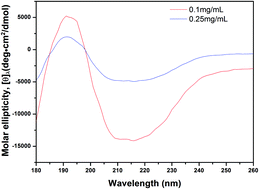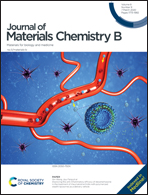Self-assembling RATEA16 peptide nanofiber designed for rapid hemostasis
Abstract
Uncontrolled bleeding remains a contributor of mortality in various accidents, and ideal hemostatic materials with rapid and efficient hemostasis, ease of use, biocompatibility and non-toxic characteristics are urgently needed. In this study, we synthesized a novel polypeptide material, RATEA16 (CH3CO-RATARAEARATARAEA-CONH2), by the solid phase method, and investigated the secondary structure, self-assembly performance, gelation ability, biocompatibility and hemostatic efficiency in vitro and in vivo. The results showed that the RATEA16 peptide solution had an appropriate pH after replacing the strongly acidic aspartic acid with weakly acidic Glu and basic Thr in the RADA16-I backbone. The secondary structure of RATEA16 played an important role in the formation of nanofibers induced by self-assembling behavior. RATEA16 possessed good biocompatibility and rapid gelation ability. Animal liver model experiments showed that RATEA16 had a higher blood coagulation rate than CMS and Arista® and achieved complete hemostasis in about 40 seconds. Therefore, the study indicated that the self-assembled peptide RATEA16 had excellent biocompatibility and efficient hemostasis, suggesting that RATEA16 can serve as a reliable and promising hemostatic agent for rapid hemostasis.



 Please wait while we load your content...
Please wait while we load your content...